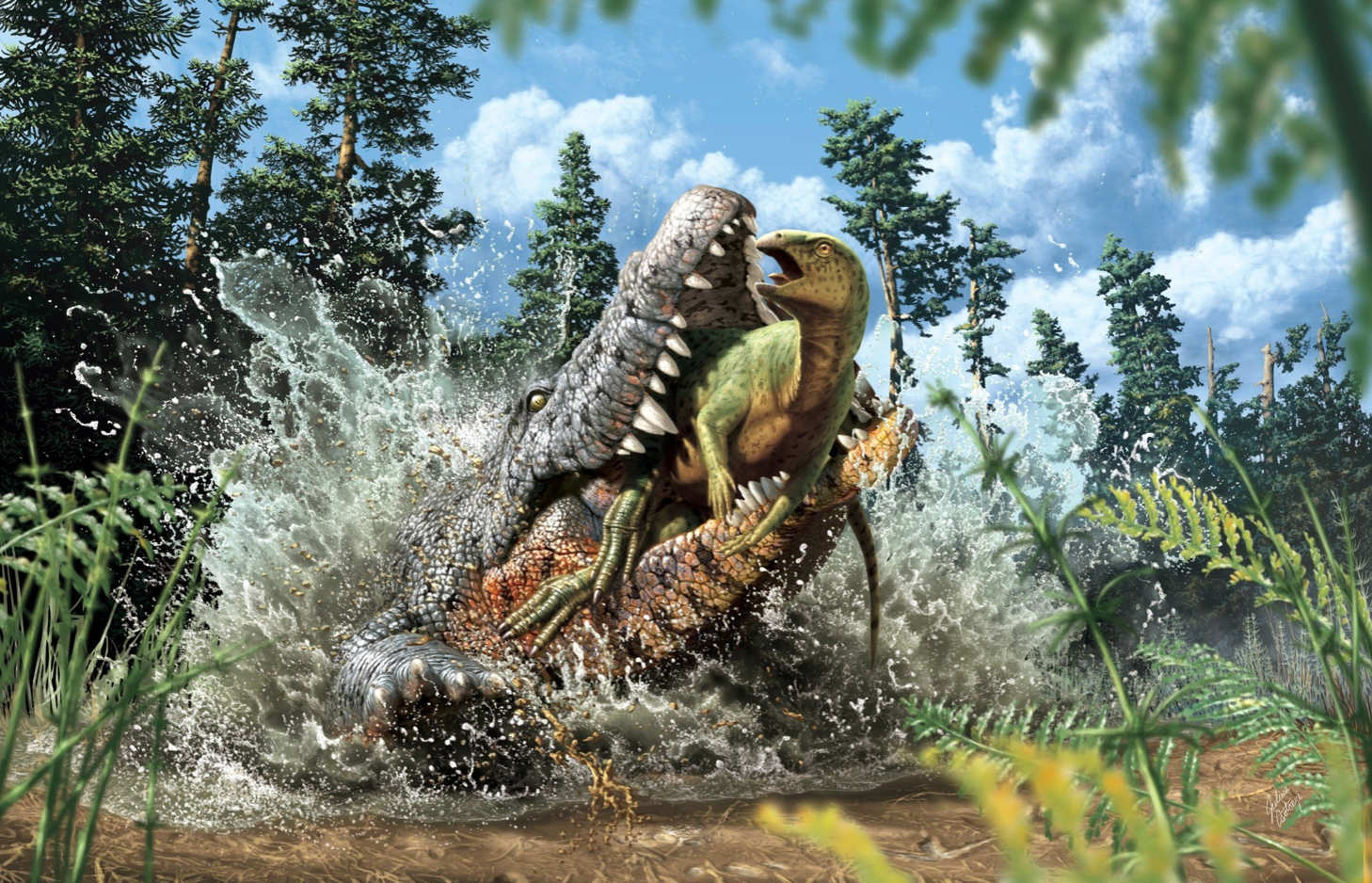Massive ancient ‘killer’ croc discovered with partially digested baby dinosaur in its stomach
Crocodile was likely caught up in megaflood, got buried and died soon after its last meal, scientists say

Scientists have confirmed that a massive 93-million-year-old crocodile found in Central Queensland had devoured a baby dinosaur based on remains found in its fossilised stomach contents.
The crocodile Confractosuchus sauroktonos, which translates as “broken crocodile dinosaur killer,” was about 2m to 2.5m in length (6.5ft to 8ft), according to the study published in the journal Gondwana Research.
The word “broken” in the crocodile’s name refers to the massive, shattered boulder from where the fossils were uncovered, said the scientists from the Australian Nuclear Science and Technology Organisation.
After the fossils were first discovered in 2010, early studies detected bones of the small chicken-sized juvenile dinosaur in the gut. The juvenile reptile was an unidentified ornithopod, a group of medium to large plant-eating dinosaurs. The partially-digested dinosaur may have weighed around 1kg to 1.7kg.
Scientists say a “staggering” 35 per cent of the crocodile was preserved, including a “near-complete skull”, showing the arrangement of teeth, although the tail and hind limb were missing.
“In the initial scan in 2015, I spotted a buried bone in there that looked like a chicken bone with a hook on it and thought straight away that it was a dinosaur,” Joseph Bevitt, a co-author of the study, explained.
“Human eyes had never seen it previously, as it was, and still is, totally encased in rock,” Dr Bevitt added.
With further analysis using high-resolution 3D digital scans and specialised X-ray imaging over the next few years, researchers could unravel more conclusive details about the giant crocodile and its dinosaur prey.
Based on the analysis of the dinosaur remains, researchers say there was clear evidence of oral processing by the crocodile, including dismemberment and bone fragmentation of the prey, which are hallmarks of feeding behaviour seen even in some modern-day crocodile species.
They speculate that the crocodile was likely caught up in a megaflood event, got buried and died soon after its dinosaur meal.
“The fossilised remains were found in a large boulder. Concretions often form when organic matter, or say a crocodile, sinks to the bottom of a river. Because the environment is rich in minerals, within days, the mud around the organism can solidify and harden because of the presence of bacteria,” Dr Bevitt said.
Scientists believe further analysis of this ancient crocodile and its last meal would continue to shed more light on the relationships and behaviours of animals that inhabited Australia millions of years ago.
Join our commenting forum
Join thought-provoking conversations, follow other Independent readers and see their replies
Comments
Bookmark popover
Removed from bookmarks